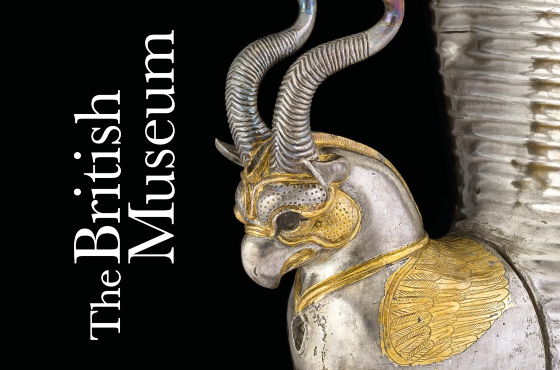The Golden Constant
Buy it for the gold bug in your life this Christmas...
STOCK-MARKET BULLS never read history, as in anything from the day before
yesterday, and least of all
the pink pages' price/earnings table today.
So the library shelves marked "332"
under the Dewey Decimal
system are typically left free for bears and gold investors to roam. And glancing at how long the
stock-bull of 1982-2000 ran, you can
see why.
Gold lost
three-quarters of its purchasing power
during that time. Only the grand sweep of history then proved that the glass was neither half-empty or
full, but shattered...as the
much-fabled history-loving "gold bug" believed all along.
"Gold has two interesting properties: it is cherished
and it is indestructible. It is never cast away and it
never diminishes, except by outright loss..."
So wrote Professor Roy Jastram in
The Golden Constant (John Wiley & Sons, 1977). Alongside Peter
Bernstein's The Power of
Gold and H.W.Brands' The Age
of Gold – but swapping their ripping yarns for dry, scholarly tables of grain prices from
the 18th century – it's one of
the very few books to acknowledge what die-hard gold investors feel so sure to be true:
Gold is much more than mere metal. It's
history itself.
"[Gold] can be melted down, but it never changes its chemistry or weight in the process. The ring worn
today may contain particles
mined in the time of the Pharaohs. In this sense it is also a constant."
It's
not something you can say of
many other investments. Atomic weight 79; melting point 1064°C at sea level; cooled density 19.25 grams
per cubic centimetre...gold's
got everything a collateralized debt obligation has not. Time cannot dull or change it. Debt default
can't diminish its value
(provided you own it, securely, outright of course). And as Jastram's detailed study of four centuries
shows, gold's value, like its
nature, also displays something of a constant – constant across the long term at least – as measured
against wholesale
prices.
Trouble is, as Marc Faber of the Gloom, Boom & Doom Report
reminded us late in 2008 –
just as gold was sinking alongside everything else – "Gold has kept its purchasing
power over the course of history...[but] the problem is that the owners of the gold changed over
time."
How
long can you wait for your wealth-store to return to full value? Or as Faber put it, "When Timur sacked
Aleppo and Damascus in 1400,
it didn't help to have your savings in gold. You lost your life and your gold."
Tamberlaine's Mongol heirs
soon enough lost that gold, too. But amid such cataclysms, Jastram saw instead what he called "The
Attila Effect" – the plain fact
that, as Jill Leyland explains in her additions to the new, re-issued and updated text of The Golden Constant, "Men and women have turned to gold in times of
distress, whether political,
economic or personal..."
"The Latifundia passed gold bars secretly to their
heirs," wrote Jastram 32 years
ago, "who thus survived barbarian invasions to become nobility under the Merovingian kings of the fourth
century...Austrian refugees,
escaping Hitler's storm troopers, often owed their survival in a new country to the gold and jewels they
could carry on their
persons...The French peasant was astute when he buried his coins on the threat of invasion and
pillage..."
Through such crises as the French and Bolshevik Revolutions, as well as Hungary's post-war
hyperinflation – worse even than Weimar
Germany's one trillion per cent on some accounts – gold retained its ability to raise cash, if not act
as payment itself, for those
lucky few who'd chosen to hoard it ahead of the need.
Nor does history require
"extreme episodes", as Leyland
writes in the new 2009 edition, "to demonstrate the value of gold in a crisis..."

Jastram's study
famously split the history of gold's purchasing
power into inflation, deflation, and the rest. Since gold was usually money during the first 350 years
of his scope, it also acted
quite oddly to our 21st century view:
Gold's value rose
during deflation, but fell during inflation. Whereas today, of course, everyone expects gold to rise
when the cost of living
increases, but fall when the threat of inflation recedes. Which may or may not be wrong, but the first
post-Gold
Standard inflation said
otherwise, and it most likely won't matter given the volume of faith this very modern idea now
stores.
Hence
Leyland's labels for her post-Jastram charts (the thirty years from 1977), which first concur with but
tweaking his framework ("High
Inflation: 1970-1980"; "Disinflation: 1980-2000"). To fit non-money gold's four-fold increase so far
this decade, however, a whole new
category's needed – "2000-2007: Inflation fears revived".
And the future?
Inflationary fears will be revived
by the price of the new Golden Constant, costing $110 in the US, or a shocking £79.95 in the
UK...equal to a Dollar exchange rate
of just $1.37. Yet this is a scholarly tome, and even corduroy jackets aren't cheap. Second-hand stores,
meantime, are still charging
$181 or more for the 1978 hardback (worse yet again in the UK, priced at £157.98 with a
quarter-century-busting $1.14 on cable. How's
that for the grand sweep of history!).
If you or the gold bug in your life
needs reassurance this winter
that, in the long-run at least, gold's constant purchasing power is as rare and precious as its
substance, you could do much worse
than treat him for Christmas.
Just don't expect to see much of him (and let's
face it, it will be a him...)
outside your library on Boxing Day.








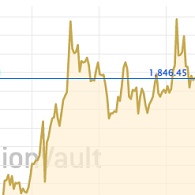
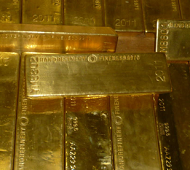
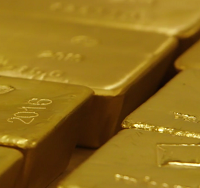

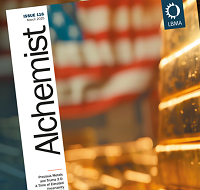
 Email
us
Email
us